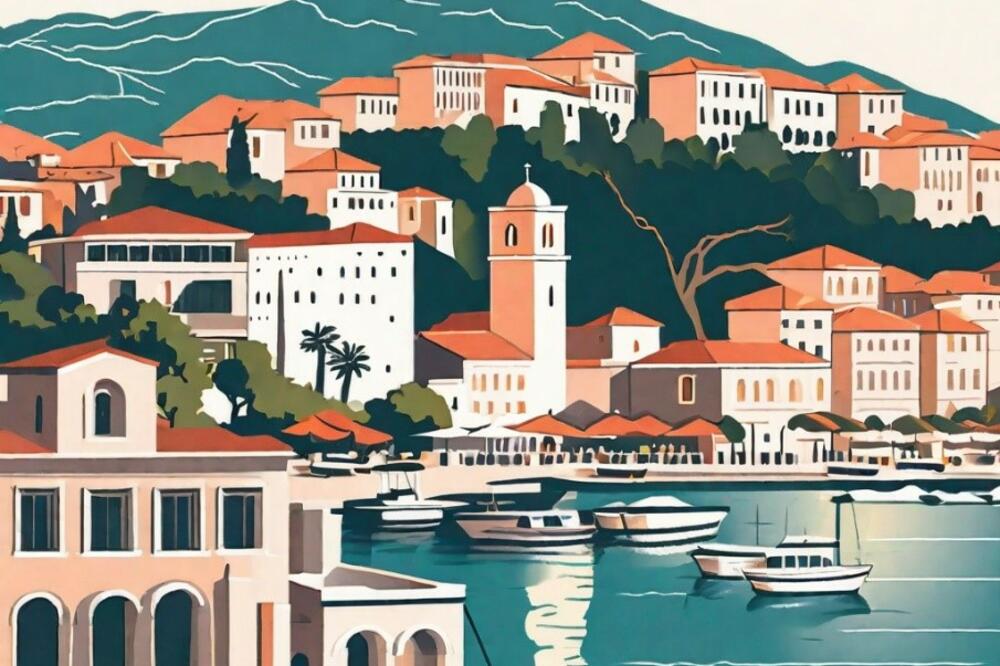Discovering Budva
Budva, known as the 'Queen of the Mediterranean', is a bustling town with a vibrant nightlife and beautiful beaches. Its old town, Stari Grad, is a treasure trove of history, with narrow, winding streets and stone houses that date back to the Middle Ages.
The Citadel, a medieval fortress, offers breathtaking views of the Adriatic Sea and the town below. The town’s Museum of Budva is another must-visit, housing artifacts that tell the story of Budva's rich history.

Exploring Budva's Beaches
Budva's coastline is dotted with stunning beaches, each offering a unique experience. Mogren Beach, located near the old town, is known for its crystal-clear waters and golden sand. For a more secluded experience, the beaches of Sveti Nikola Island, accessible by a short boat ride, provide a peaceful retreat.
For adventure seekers, Jaz Beach is the place to be. This beach hosts numerous water sports activities, such as jet ski, paragliding and other adrenalin water activities.
Unveiling Bar

Bar, a port town located further south, is a blend of modernity and tradition. Its contemporary side boasts a lively marina and shopping district, while Stari Bar, the old town, offers a glimpse into the town's past.
The old town, located on a hilltop, is a maze of ruins and partially restored buildings, with the ancient fortress offering panoramic views of the surrounding landscape. The town’s Olive Tree, believed to be over 2000 years old, is a symbol of Bar's enduring spirit.
Bar's Cultural Highlights
Bar is known for its rich cultural scene. The annual ‘Barski Ljetopis’, a summer festival, showcases a variety of performances, including theatre, music, and dance. The town is also home to several museums, such as the King Nikola's Palace, which houses a collection of historical artifacts.
For food lovers, Bar offers a variety of local dishes. The town is particularly known for its olive oil and citrus fruits, which are used in many traditional recipes.
Ulcinj: A Blend of Cultures
Ulcinj, the southernmost town of Montenegro, is a melting pot of cultures. Influences from the Illyrians, Romans, Byzantines, and Ottomans can be seen in the town's architecture and traditions.
The Old Town of Ulcinj, perched on a hill overlooking the sea, is a labyrinth of narrow streets and stone houses. The town's Castle, with its imposing walls and stunning views, is a testament to Ulcinj's turbulent past.

Ulcinj's Unique Attractions
Ulcinj is home to some unique attractions. The Long Beach, stretching over 12 kilometers, is the longest sandy beach on the Adriatic coast. Ada Bojana, a river island, is a paradise for nature lovers and a popular spot for kite surfing. The island itself has for decades been a haven for nudists.
The town's Solana (salt pans) is another highlight. These pans, which are a significant bird habitat, turn pink at sunset, creating a surreal landscape. It is also the only place in Montenegro where you can see flamingos. The town is also known for its vibrant nightlife, with numerous bars and clubs lining the beachfront.
Each town, with its distinct charm and attractions, offers a unique insight into the Montenegrin lifestyle, making them a must-visit for any travel enthusiast. You are sure to return with a wealth of experiences and a deeper appreciation of Montenegro's rich heritage and vibrant culture.
Bonus video:





